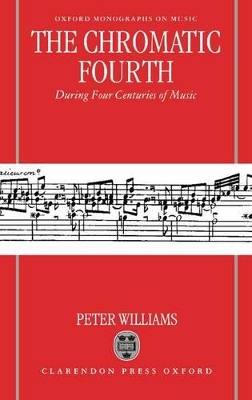Oxford Monographs on Music
1 total work
Despite its rather forbidding name, the `Chromatic Fourth' is one of the most familiar short themes in virtually all western music over the four hundred years before the middle of our century. It is a sequence of six notes that can be heard in a huge variety of ways, most originally, effectively, and beautifully in the work of the greatest composers, from the madrigalists to Stravinsky, from Byrd to Bartók, with telling examples in the operas of Monteverdi,
Mozart, and Wagner, or in the keyboard music of Bull, Bach, and Schubert.
Although the existence of the chromatic fourth has long been recognized, and occasionally mentioned by music historians, this is the first thorough-going attempt to trace its likely origins and its evolution over four hundred years. With over 200 music examples, Peter Williams demonstrates the theme's wonderful variety, and shows that it was used by composers not only as a means of emotional expression, but also as a structural device.
Mozart, and Wagner, or in the keyboard music of Bull, Bach, and Schubert.
Although the existence of the chromatic fourth has long been recognized, and occasionally mentioned by music historians, this is the first thorough-going attempt to trace its likely origins and its evolution over four hundred years. With over 200 music examples, Peter Williams demonstrates the theme's wonderful variety, and shows that it was used by composers not only as a means of emotional expression, but also as a structural device.
